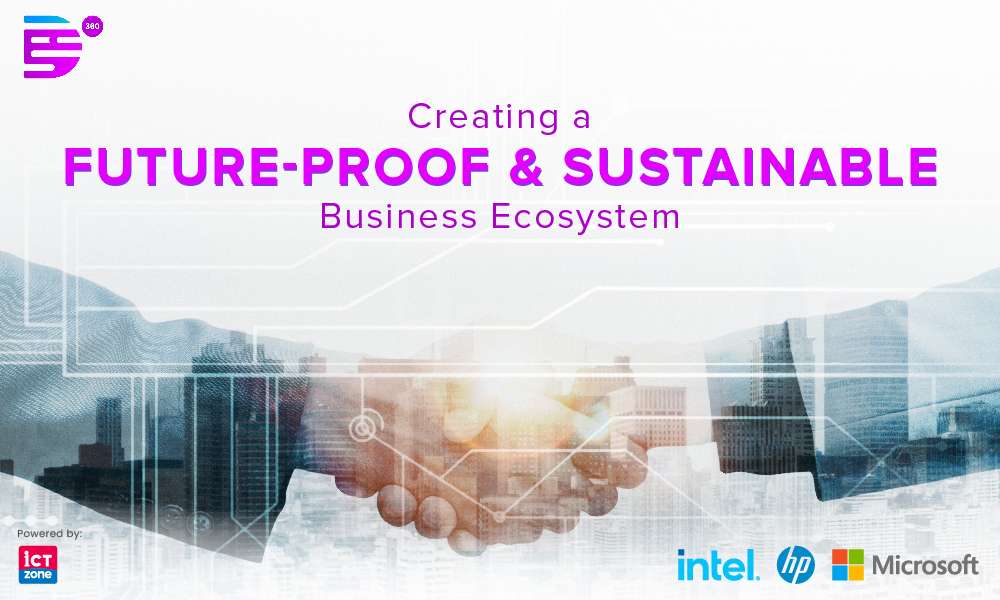
While it may not be immediately apparent, the electronic device industry is contributing to the global warming crisis at an alarming rate. Green computing is, therefore, a prerequisite for any business in Malaysia that aims to strengthen its strategy for ICT sustainability.
Besides being an excellent strategy for businesses to prove corporate social responsibility, green computing can also help lower operational costs and increase energy efficiency.
Read on to discover 4 easy ways you can use green computing to transform your business and help save the environment at the same time.
What is Green Computing
Before we dive into the techniques, let us explore what green computing actually means. The term refers to strategies taken to minimise the negative impacts on the environment.
It calls for ways to design, produce, use, and dispose of computing devices and equipment differently. Also known as green technology, this initiative typically involves using less power, switching to renewable electrical sources, and lowering greenhouse gas emissions.
Businesses keen on reducing their carbon footprint would deploy energy-efficient CPUs, servers, and power systems as part of their green computing strategy.

4 Ways Businesses Can Use Green Computing to Impact the Environment
1. Optimise Tools & Products
Among the biggest ways to make a significant impact is to optimise the tools and products you use around the office.
Enable Power Management
Make sure to enable power management features on all devices. This feature automatically puts devices in sleep or hibernation mode when they are inactive, so you can reduce heat dissipation and overall energy consumption.
Power Off
Cultivate the habit of switching off devices at the end of the day. Additionally, you should keep peripherals like laser printers off when not in use since they consume more energy when powering up.
Use Rechargeable Batteries
Ditch single-use batteries in favour of rechargeable ones. They produce less waste since they can be reused up to 1000 times, depending on their usage and type.
Go Digital with Documents
If your business relies heavily on printed documents, switching to sharing digital copies as much as possible would certainly make a huge difference—both in carbon reduction and your company’s bottom line.
Consider Remote Work
Change to a hybrid or fully remote work model. Working remotely can reduce energy consumption simply because it results in fewer people commuting to work and back. An emptier office also reduces power and water demand.

2. Limit e-Waste
Any electronic product that has reached or is near the end of its useful life is known as e-waste. They include everything from unwanted computers to copiers and fax machines.
It is imperative that businesses have an effective e-waste management strategy, as disposing of electronic products irresponsibly can lead to dire consequences.
E-waste that ends up in landfills releases toxic substances such as lead and mercury into soil and water, endangering the lives of humans and animals.
Refrain from Impulse Buying
Decide if your office equipment truly needs replacing or if that upgrade is more of a want than a need. Try to purchase new devices only when your existing ones are inhibiting productivity in your workplace.
Opt for Refurbished Devices
Alternatively, you can cut some expenses by purchasing refurbished or second-hand devices.
Contrary to popular belief, refurbished computers and PCs usually do not have performance issues. They even come with warranties and certificates to prove that they have been tested to ensure quality before hitting the shelves.
Engage Experts for Sustainable and Secure Device Disposal
However, if you find it necessary to buy a new work device, make sure to dispose of used devices responsibly.
Some companies offer services for device recovery in Malaysia to help businesses recycle or repurpose their devices while keeping their sensitive data safe in the process.

3. Choose Eco-Friendly Devices & Equipment
Keep an eye out for printers, computers, smartphones, and TVs that are Energy Star-rated or are products of green design practices.
Energy Star Rating
The distinguishable Energy Star seal signifies that the devices comply with the energy-efficient standards the U.S. Environmental Protection Agency (EPA) has set.
Many major tech manufacturers are known to produce Energy Star-rated devices. Hence, you never have to worry about sacrificing performance or quality.
Green Design
Moreover, you can purchase from IT manufacturers who practice green design and offer easily repaired, reused, or refilled products.
These products have components that can be inspected, separated, and replaced if needed, so discarding the entire device is unnecessary.
4. Support Companies with Green Initiatives
Do your part in the race against climate change by supporting vendors that prioritise sustainability.
HP
HP is a company that is taking strategic steps to reduce its carbon footprint. The international IT giant’s dedication to sustainability goals is evident in how they design and manufacture its products.
Besides aiming to reach 75% circularity for its products and packaging by 2030, HP is poised to achieve zero waste across its operations by 2025.
Clearly, it does not take much to make a positive impact on the environment. Even a small change in how you dispose of used devices can make a huge difference.
If you want to begin your green computing journey by discarding or repurposing your work devices, DaaS 360 is here to help. As experts in device disposal and data erasing, we can help you recycle or repurpose your devices without putting your company data or the environment at risk.
Explore our Device Recovery Service to find out more about how DaaS 360 can help your business fulfil its green objectives now.
FAQs
What are the objectives of green computing?
Green computing seeks to reduce energy consumption, which lowers the energy cost for organisations. It also aims to replace harmful materials with biodegradable ones and extend the lifespan of tech and other equipment.
How did green computing begin?
Green computing became widespread in 1992 when the US Environmental Protection Agency kickstarted a program called Energy Star. It was designed to acknowledge and promote energy efficiency in various technologies.
Why is it good for businesses to reduce their carbon footprint?
Businesses will find that carbon footprint reduction can boost their bottom line, as green computing practices could reduce operating costs.
It can even enhance employee productivity and attract new customers who are drawn to companies that share a passion for saving the planet.









